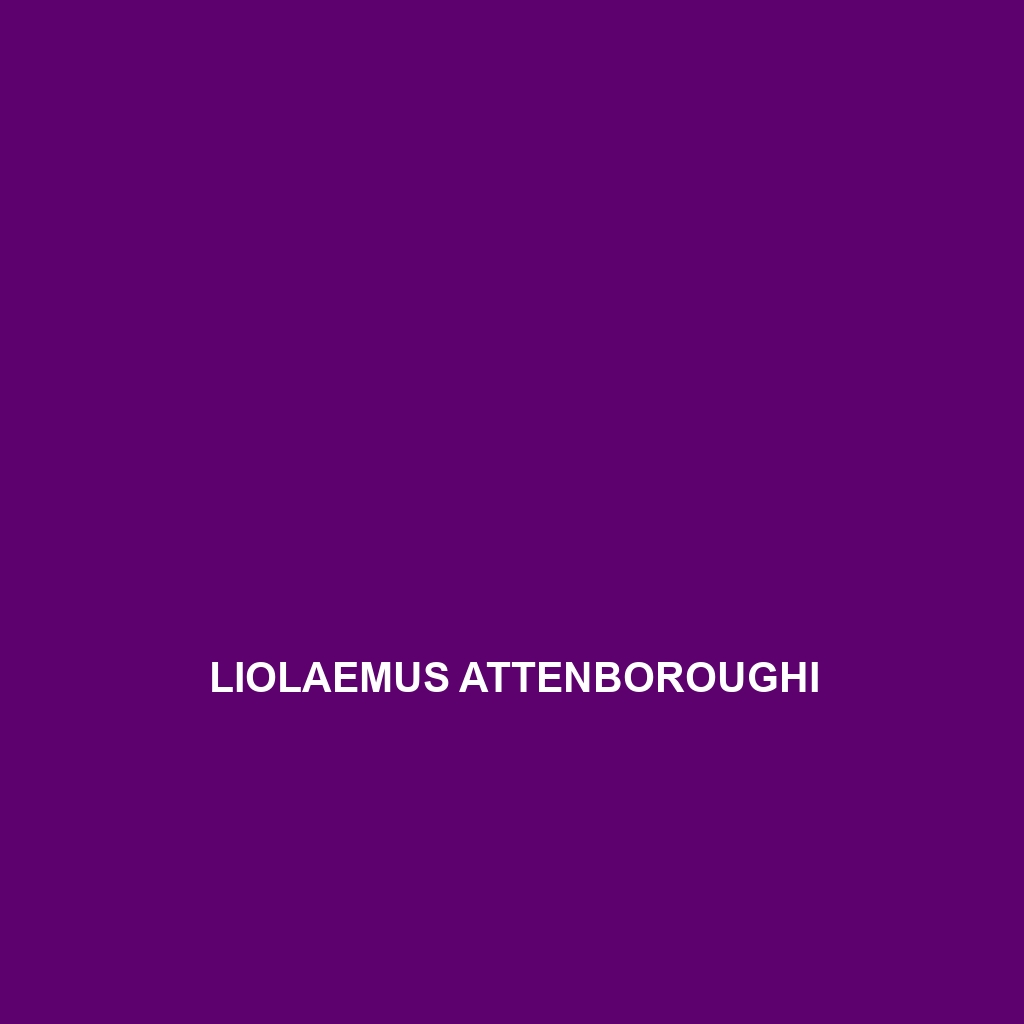Common Name
Liolaemus attenboroughi
Scientific Name
Liolaemus attenboroughi
Habitat
Liolaemus attenboroughi is primarily found in the temperate forests and high-altitude grasslands of the Southern Andes in South America, particularly in regions of Chile and Argentina. These areas are characterized by a relatively stable climate, with cold winters and mild summers, which creates a unique ecosystem conducive to the survival of this species. The lizard often inhabits rocky outcrops and shrubby areas within these environments, where it can find shelter and forage for food. These habitats are also rich in biodiversity, supporting a variety of flora and fauna, making them essential for the species’ survival.
Physical Characteristics
Liolaemus attenboroughi displays a range of physical traits that make it distinctive. Adult individuals typically measure between 15 to 20 cm in length, showing a robust and elongated body shape. Their color pattern is predominantly brown or grey with striking yellow and green markings that provide excellent camouflage amidst the rocky terrains and vegetation. The species is characterized by a slightly flattened body, elongated limbs, and a broad head, which are adaptations that enhance their mobility and agility as they navigate their rocky habitats. Additionally, they possess a unique scale arrangement that aids in moisture retention and temperature regulation, making them well-adapted to their environment.
Behavior
The behavior of Liolaemus attenboroughi is a fascinating aspect of its biology. This lizard is primarily diurnal, meaning it is active during the day, which allows it to bask in the sun and regulate its body temperature. Social interactions are often observed, especially during the mating season when males display vibrant behaviors to attract females. These displays include push-ups and head-bobbing, which serve as physical signals to assert dominance and establish territory. Interestingly, this species has shown limited migratory behavior, largely remaining within small home ranges during their adult life, although juvenile individuals may range further as they find new territories. Their ability to adapt their behavior to changing environmental conditions is a testament to their resilience.
Diet
Liolaemus attenboroughi is an insectivorous lizard, primarily feeding on a variety of insects and other invertebrates. Common prey includes ants, beetles, and grasshoppers, which are abundant in their natural habitats. These lizards employ a sit-and-wait strategy, using their acute sight to spot potential meals from a distance before launching a quick ambush. Their diet can also include small plants and fruits, especially during the warmer months when insect availability may fluctuate, showcasing their opportunistic feeding habits. This diverse dietary approach allows them to thrive in their ecosystems while influencing the population of their prey species.
Reproduction
The reproductive cycle of Liolaemus attenboroughi is intriguing and vital for the continuation of the species. Mating typically occurs during spring when temperatures begin to rise, with a gestation period ranging from 6 to 8 weeks. Females can give birth to live young, with litter sizes averaging between 4 to 10 offspring. Parental investment is limited, as the young are independent from birth, although there is evidence that females may select optimal habitats for birthing. Males often engage in territorial disputes, showcasing their fitness to potential mates through displays of strength and dominance, an essential aspect of the species’ reproductive strategy.
Conservation Status
As of current assessments, Liolaemus attenboroughi is listed as vulnerable due to habitat destruction and fragmentation caused by human activities such as agriculture and urbanization. The loss of temperate forest habitats poses a significant threat to their populations. Conservation efforts are being implemented, focusing on habitat preservation and restoration, as well as public awareness campaigns to promote the species’ ecological significance. Ongoing research is crucial to monitor population trends and enhance protective measures effectively.
Interesting Facts
There are several captivating aspects to Liolaemus attenboroughi. One particularly interesting fact is that this lizard is known for its remarkable ability to change color slightly in response to environmental conditions, aiding in both camouflage and temperature regulation. Furthermore, these lizards exhibit a unique social structure, where subordinate males may form alliances with dominant males, increasing their chances of mating opportunities indirectly.
Role in Ecosystem
In their respective ecosystems, Liolaemus attenboroughi plays a crucial role as both predator and prey. By feeding on various insects, they help in controlling pest populations, which is vital for maintaining ecological balance. Additionally, they serve as a food source for larger predators, contributing to the food web dynamics. Their presence in the temperate forests of the Andes indicates a healthy ecosystem, as they are sensitive to environmental changes. The conservation of this lizard thus reflects the broader health of its habitat, underscoring the importance of biodiversity in sustaining ecological integrity.
